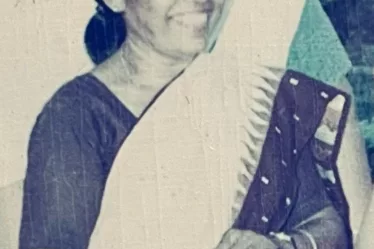“Enough is enough,” thundered Dr. Sushila Nayar, her voice cutting through the hall.
“No more free PG seats for MGIMS boys and girls. If they want postgraduate degrees, they must first serve two years in the villages.”
She meant it.
In 1969, Dr. Nayar had built MGIMS on a dream: to raise doctors who would live among India’s rural poor, heal their wounds, and understand their struggles. But by the early 1990s, her dream was faltering. Young doctors, degrees in hand, fled to cities or foreign shores. Villages stayed sick, abandoned.
Hurt but resolute, Dr. Nayar struck back. A new rule was born: no rural service, no postgraduate seat.
The 1986 regular batch escaped her net. The 1986 referred batch was not as lucky — they were dispatched to distant NGOs.
Then came the 1987 batch.
“We’ll waste two years!” they cried. “Why should we pay for the burden of others?”
Their anger simmered. Resentment grew.
By 1992, the 1987 batch was finishing internship. MGIMS had enforced the mandatory rural service for them. A few protests rose, but nothing moved. Most students, disheartened, resigned to their fate.
Then came a spark.
On December 6, 1992, the Babri Masjid fell. PGI Chandigarh’s entrance exam, scheduled for the next day, was canceled. In Delhi, Rajiv Gambhir — a 1987 batch intern — decided enough was enough. Without telling his hospital or his family, he boarded a train to Sevagram.
In a few days, he rallied his batchmates. “Bring five thousand rupees by tomorrow,” he said.
Within four days, eight students signed a petition against MGIMS. They filed a case in the Nagpur bench of the Bombay High Court.
The stay came quickly. PG admissions at MGIMS froze for nearly two years.
Most of Rajiv’s batchmates left by January to join rural service centers. Rajiv stayed behind, finishing internship, carrying the fight alone for eight long months. He moved across batches, collecting small donations — 100 or 200 rupees at a time — raising almost one lakh rupees, a huge sum then.
Rajiv Gambhir later recalled:
“I took early morning buses to Nagpur for every hearing, returning late at night. I helped draft replies, pleaded in court, cried before the judge. And we finally won.”
Seven students formally fought the case. They pooled funds to hire Mr. D.K. Deshmukh, a senior lawyer known for his skill and steep fees.
The court agreed with the students.
Justices H.W. Dhabe and B.U. Wahane struck down MGIMS’s rural service rule, calling it arbitrary and unenforceable. MGIMS was ordered to admit the students without delay.
The students had won — for now.
Seven 1987 batch students decided to fight. They pooled money for Mr DK Deshmukh, a lawyer whose fees mirrored his formidable reputation. They went to the Nagpur bench of the Bombay High Court, hearts pounding, futures dangling.
And they won.
The court struck down the rural posting rule as arbitrary and unenforceable. Justice HW Dhabe and BU Wahane sided with the students. MGIMS was ordered to admit the students without delay.
Victory?
Not yet.
Dr. Sushila Nayar stood firm. Dhirubhai Mehta refused to budge. Dr. B.C. Harinath, the Dean, was stubborn.
Anger exploded. The 1987 batch camped outside the Dean’s office, raising slogans, burning effigies, launching a chain hunger strike that stretched into days. Their voices echoed through the campus.
MGIMS dug in. They dragged the fight to the Supreme Court. The students fought too. They scraped together what little they had and hired a big-shot lawyer from the south — a man who knew his craft but charged like a king.
Every court date cost ₹30,000. One adjournment, another ₹30,000 gone. Their pockets bled dry.
Broke and broken, the students threw away the towel.
The Supreme Court ruled — in favor of MGIMS.
The students—who had once roared outside the Dean’s door—scattered in silence.
They packed their bags and scattered across and beyond Maharashtra, searching for Primary Health Centres. There was no road map. MGIMS had no tie-ups, no ready list of NGOs or health centers waiting to take them. Some returned to their native villages, setting up makeshift health clinics.
Two long years crawled by.
One by one, they returned to MGIMS — leaner, harder, wiser. Their spirits battered but unbroken, ready at last to claim their MD seats, their futures, and the battles they had earned.
In a twist of irony, the seven students from the 1986 referred batch, who had quietly complied, secured prized PG seats in clinical disciplines. Outsiders, too, found their way into MGIMS—local students working for their MDs alongside newcomers from distant places. Some senior students, nearly five years ahead, also returned after working in primary health centers and meeting the rural service rule.
It was a mixed group, drawn together by chance and grit.
The mandatory rural posting had taken root. For nearly twenty-seven years, generations of MGIMS doctors learned medicine not just in the medical colleges, but also from the rural health centers.
Not because they chose to.
But because they had no choice.
The rule finally ended with the MBBS batch of 2009, swept away by the arrival of the NEET examination. Across India, PG seats were no longer rewards for compassion—they became prizes for those who could master MCQs.
The two-year rule was born, fought over, and buried. Its memory still lingers.
